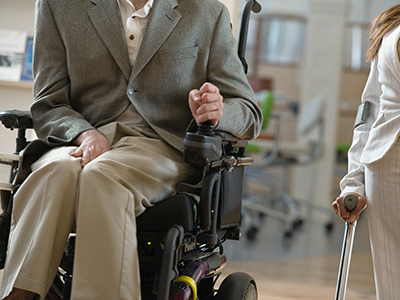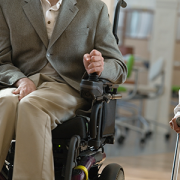Increasing the patient’s voice in osteogenesis imperfecta research and care

The Osteogenesis Imperfecta Foundation Patient-Centered Outcomes Research Project brought patient voices into efforts to improve patient-centered outcomes research and education in osteogenesis imperfecta.
Rare bone diseases constitute about 5% of all known rare diseases. Osteogenesis imperfecta (OI) is a group of genetic disorders causing connective tissue dysfunction and bone fragility, affecting an estimated 25,000 to 50,000 people in the U.S. Many patients with rare diseases, including those with conditions like OI, suffer from delays in diagnosis and lack of access to the complex multidisciplinary care they require.
Children’s orthopaedic surgeon Laura Tosi, M.D., is the co-lead of a two-year program, Osteogenesis Imperfecta Foundation Patient-Centered Outcomes Research Project. The now completed program brought patient voices into efforts to improve patient-centered outcomes research and education in osteogenesis imperfecta.
Increasingly, the OI community has become more vocal about its need for information and options for evidence-based care. Research about this condition often lacks the patient’s voice. Collecting the patient’s perspective about natural history, clinical best practices, quality of life and research priorities is challenging because, like so many rare diseases, the affected population is relatively small and geographically dispersed.
“We were excited that so many members of the OI community (patients, caregivers, clinicians, and researchers) stepped up to help us with this work for the last two years,” said Dr. Tosi. “They served on committees, completed surveys, and attended training sessions to learn more about patient-centered outcomes research.”
The program accomplished many goals, including creating a community of stakeholders who are trained in patient-centered outcomes research, with specific attention to priority topics identified by the OI community.
“We believe that attention to the broad impact of OI on patients’ lives, from patients’ perspectives, is urgently needed to better inform assessment, care and comparative effectiveness recommendations across the life span,” said Dr. Tosi.
The program considered the patients’ perspective and encouraged a collaborative effort among Children’s National Bone Health Program staff, geneticists, endocrinologists and other specialists to achieve rapid, accurate diagnosis that facilitates individualized care.
“Advances in knowledge can and will happen faster when more people participate in research from the outset,” said Dr. Tosi. “This means not just shaping the questions but also gaining the ability to understand and interpret the impact of such investigations.”
The program also expanded the communications and education strategies related to patient-centered outcomes, even during COVID-19.
The pandemic positively influenced the program’s educational efforts, Dr. Tosi added. The difficulties that emerged in the early months of the pandemic helped capture the community’s attention as they discussed the importance of the program. Through a COVID-19 supplemental award, the program gained more resources to expand the scope of the original education efforts.
With the new challenges and the possible physical and mental health threats that the pandemic posed to people with OI, including isolation and social distancing, the team used engagement strategies to raise awareness of the COVID-19 hazards, disseminated best practices for responses, and enhanced communications between stakeholders. The researchers were able to:
- Expand virtual meetings, which allowed them to reach a wider range of patients.
- Create and disseminate COVID-19 content (e.g., prophylactic care, symptoms, diagnosis, treatment, outcomes).
- Use their existing OI Registry to document and track evolving issues such as more difficult access to medical care (or other necessary services), “daily living” concerns or burdens, and options for safe “return to work” and American Disabilities Act “work accommodations.”
- Gather information on therapeutic options (e.g., pros and cons of medicines, counseling, telemedicine) and their potential to mitigate the health problems that isolation and social distancing create.
- Develop tools to prepare the community for telemedicine, with emphasis on educating health professionals about patients’ higher vulnerability to coronavirus.
While the outcomes of this initiative were overwhelmingly positive, the researchers are also considering some changes, such as implementing “hybrid” models of in-person and remote meetings in the future.
Dr. Tosi served as project co-lead alongside colleagues Tracy Hart, project lead, from the Osteogenesis Imperfecta Foundation (OIF) and Bryce Reeve, Ph.D., co-project lead, director of the Center for Health Measurement at Duke University.



